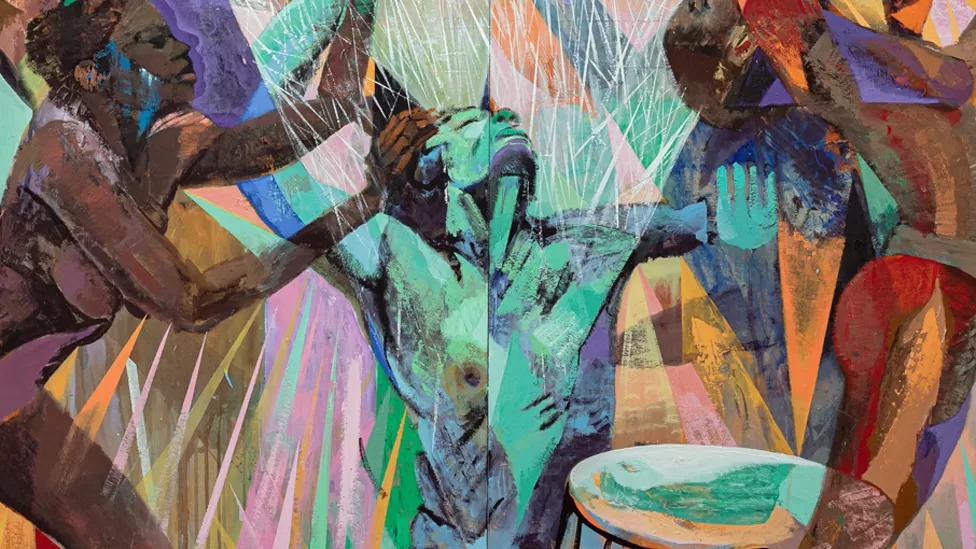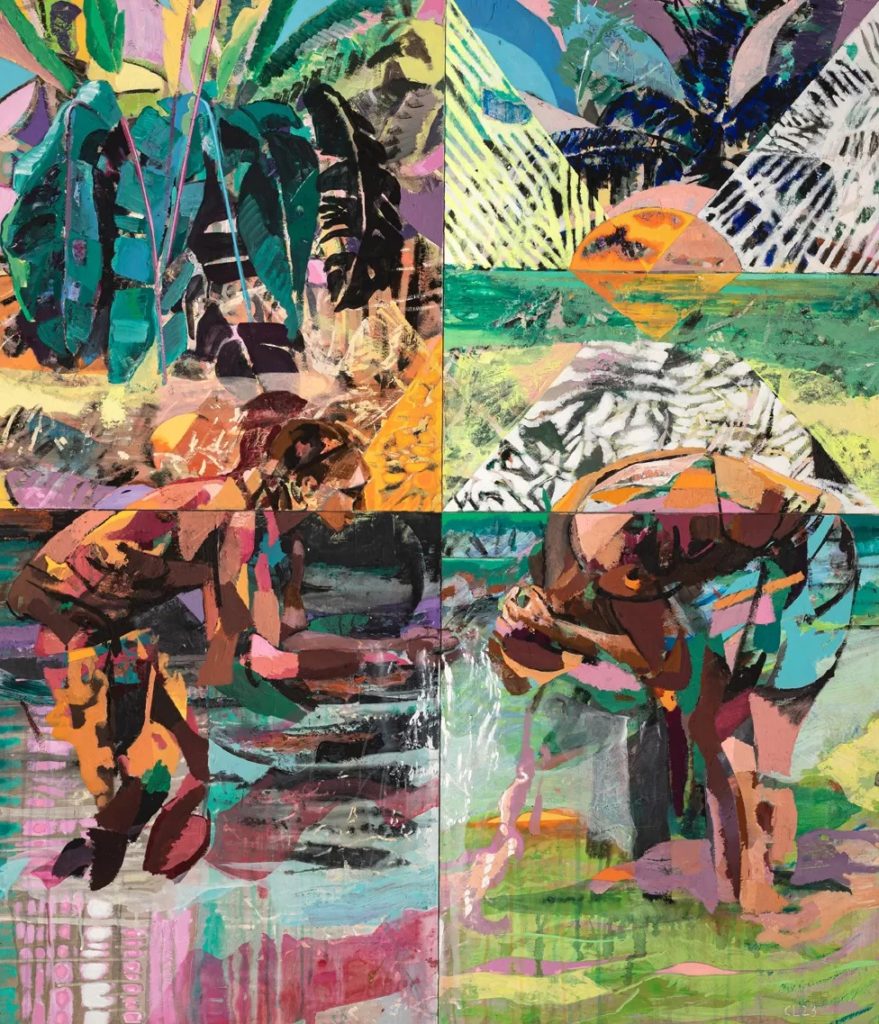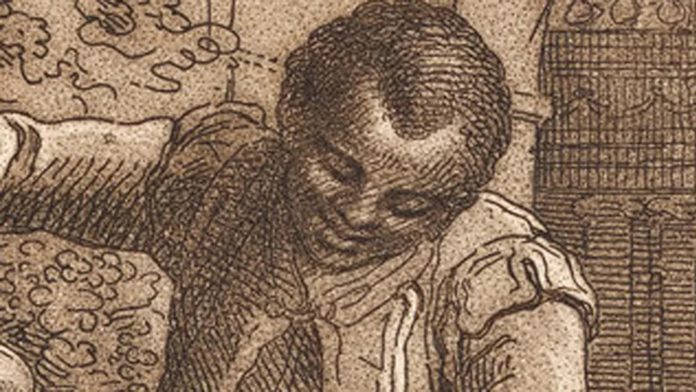Artist Che Lovelace was on his way to the coast on the Caribbean island of Trinidad to collect mud to use in carnival celebrations when he received a message that a church in the UK wanted him to create an artwork to commemorate the life of an African man he had never heard of.
Quobna Ottobah Cugoano was a respected abolitionist in 18th Century Britain – but, despite his significant role in the abolition of the slave trade and slavery, his story is not that well-known.

Cugoano was born in the Gold Coast, today’s Ghana. He was enslaved when he was 13 – captured with about 20 others as they were playing in a field.
His destination was the sugar plantations of the Caribbean island of Grenada. On board the ship taking him across the Atlantic Ocean, there was, as Cugoano writes, “nothing to be heard but the rattling of chains, smacking of whips, and the groans and cries of our fellow men.”
Forced to work on a sugar plantation after two years of “dreadful captivity… without any hope of deliverance, beholding the most dreadful scenes of misery and cruelty”, he was brought to Britain and managed to gain his freedom in 1772.
The descriptions come from Cugoano’s own book Thoughts and Sentiments on the Evil of Slavery, in which he argues against slavery, drawing on his Christian faith and his own experiences of the trade.
He was one of the Sons of Africa, a group of black Britons who wrote letters to British newspaper editors and members of Parliament to campaign against the slave trade and slavery.
The English Heritage site says it is not known how Cugoano gained his freedom, but it may be significant that in the same year, he came to England, the Lord Chief Justice, Lord Mansfield, ruled that an attempt to send a formerly enslaved person back into slavery was unlawful.
On 20 August 1773, 250 years ago, at the age of 16, Cugoano was baptised John Stuart in St James’s Church Piccadilly, in the centre of London. But he published his book 13 years later under his original, African name.

Lovelace’s artwork in honour of Cugoano is being installed in the church entrance on Wednesday, 20 September.
His work was “the most nourishing, exciting and appropriate for the space”, says the Reverend Lucy Winkett, the rector of St James’s Church.
Lovelace is an oil painter and uses rich colours and bold shapes, which joyfully and playfully depict, and are inspired by, the people and landscapes of his native Trinidad.
He tells the BBC he was surprised not to know about Cugoano because he thought he was well-informed about the abolition movement.
“I feel fortunate to be part of shining a light on who Cugoano was – and it makes me wonder about other hidden people and their stories,” he says.
This work consists of four paintings called River, Passage, Spirit, and Vision of the Birds. Each painting is divided into four panels – something that the artist does in all his work.

Che Lovelace (born 1969) is a Trinidadian artist who lives and works in Port of Spain, Trinidad.
He first came to prominence as a champion surfer and was appointed president of Trinidad’s Surfing Association in 2012.
He has contributed to many arts, Carnival, and entertainment projects, including the weekly Studiofilmclub, founded in 2003 with Peter Doig.
Lovelace is currently a lecturer at the University of the West Indies Creative Arts Campus. He is the son of novelist Earl Lovelace.
Source: BBC


